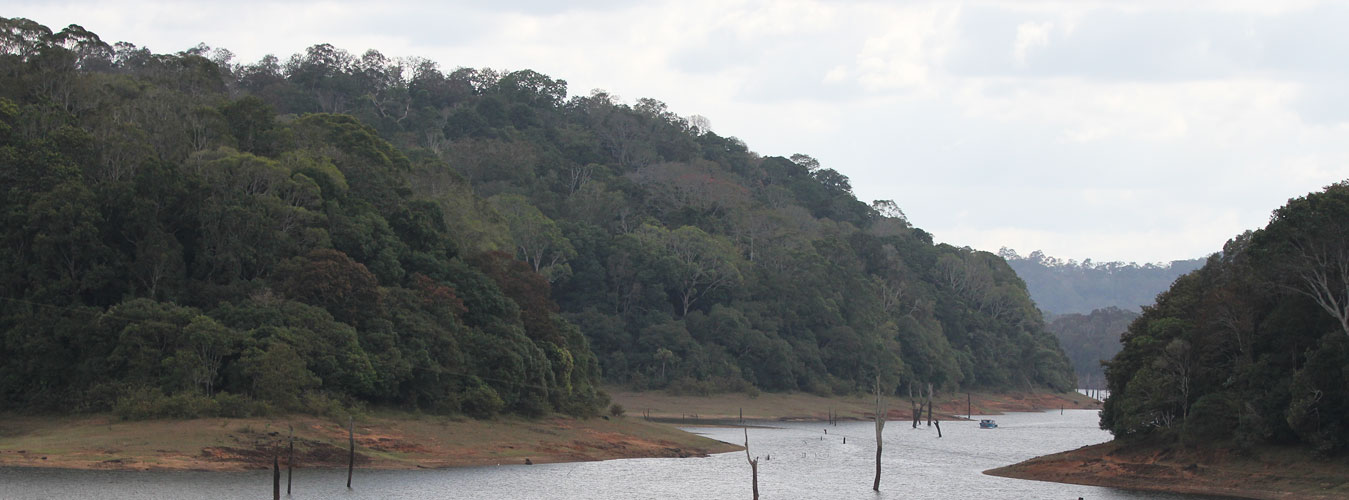PERIYAR NATIONAL PARK
Located in the lap of the mountains, Periyar National Park is surrounded by agricultural regions, especially plantations of such crops as cardamom, coffee and tea. The fresh air of the moist deciduous forest gives one a chance to experience the peace and serenity. Though it’s a Tiger Reserve, travellers/tourists visit this sanctuary to view the Indian elephants in the act of playfulness and ablution by the Periyar Lake. The park surrounds this Lake, a reservoir which was formed when the Mullaperiyar Dam was erected in 1895. Towards the conservation of wildlife and biodiversity, the first official action was taken by the Maharaja of Travancore in 1934 by declaring the forests around Periyar Lake as a private game reserve to stop the encroachment of tea plantations. In 1950, after the political integration of India, it was consolidated as a wildlife sanctuary and was declared as the Periyar National Park in 1982.
Flora, Fauna & Avifauna
- Periyar National Park is made up of tropical evergreen and moist forests, containing deciduous and semi evergreen trees like teak, rosewoods, sandalwoods, jacarandas, mangoes, tamarind, banyans, sacred fig, bamboos etc. The floral attractions of the park include 2000 species of flowering plants, 171 grass species and 143 species of orchids.
- The park has over 35 species of mammals, including many threatened species and the valuable Indian elephant and a few of tigers found here. Mammals that manage to make their presence are gaur, sambar, Travancore flying squirrel, jungle cat, sloth bear, Nilgiri tahr, lion-tailed macaque, stripe-necked mongoose, Nilgiri marten etc.
- Over 265 species of birds can be seen in the park, including migratory birds. Prominent among these are Oriental Darters, Cormorants, Kingfishers, racket-tailed Drongoes, Sri Lanka frogmouth and black-necked stork. Endemic birds include the Malabar grey hornbill, Nilgiri wood pigeon, blue-winged parakeet, Nilgiri flycatcher, crimson-backed sunbird, and white-bellied blue flycatcher.
- Reptiles of the park is commendable with approx 45 species, out of which, 30 are snakes. The rest of them comprise of 13 lizard species and 02 turtle species. Amphibians in the park include caecilians, frogs, and toads. Species include the Malabar gliding frog, Asian toad, fungoid and bicolored frog.
- Here, around 40 species of fish are found in the local lakes and rivers which include Travancore loach, channa barb, Periyar barb, Periyar latia, the Periyar trout, Salmon etc. These different fish types live in the water of protected area, out of which four are endemic to the Western Ghats.




